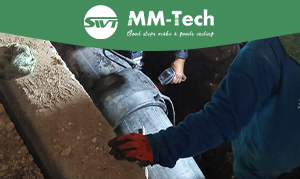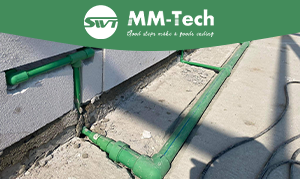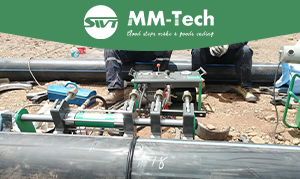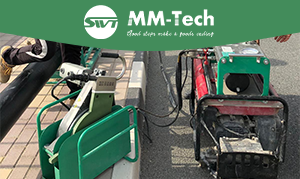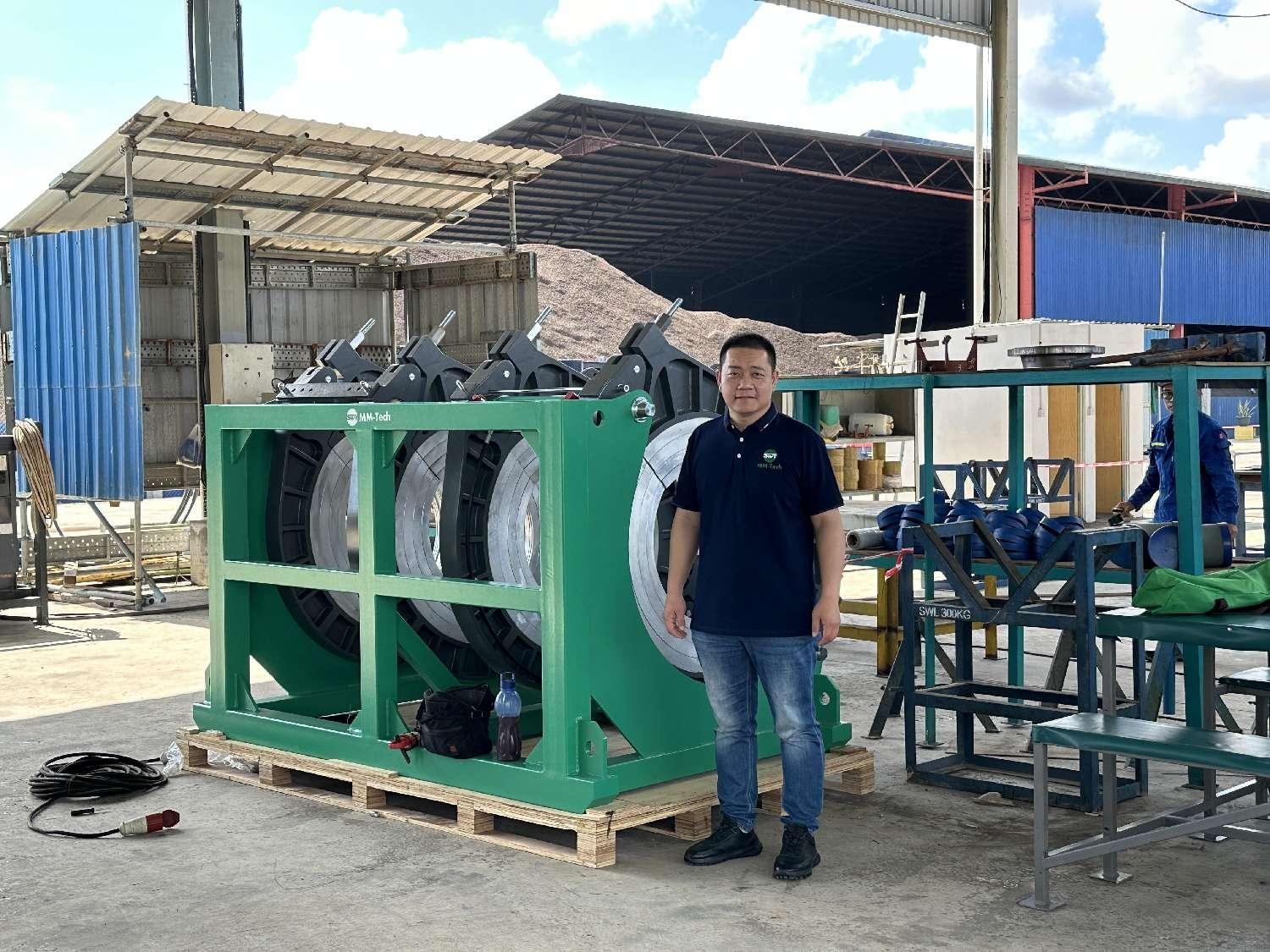
You rely on butt fusion machines to create durable HDPE pipe joints. These machines use controlled heat and pressure to form a seamless bond. This process eliminates the risk of a leak, ensuring strong and reliable connections. Their precision makes them essential for industries that demand long-lasting performance.
Key Takeaways
Butt fusion machines join HDPE pipes tightly using heat and pressure.
The process must be precise to melt evenly and apply steady pressure. This makes strong joints that handle tough conditions.
Buying MM-Tech butt fusion machines saves money by needing less upkeep and working better, making them great for many industries.
Understanding Butt Fusion Machines for HDPE Pipe Joining
What Are Butt Fusion Machines?
Butt fusion machines are specialized tools designed for joining HDPE pipes through a process called butt fusion. This method involves heating the ends of two pipes until they reach a molten state and then pressing them together under controlled pressure. The result is a seamless and durable joint that eliminates the risk of leaks. These machines are essential for industries that require reliable connections, such as construction, plumbing, and infrastructure development.
The effectiveness of butt fusion machines lies in their precision. They use tools to position and clamp the pipes, ensuring proper alignment. The heating plate preheats the pipe ends, and the process follows standardized parameters to achieve consistent results. This ensures that the joints meet stringent industry standards for HDPE pipe fusion. By maintaining precise control over heat and pressure, these machines produce strong and long-lasting connections.
Key Components of MM-Tech Butt Fusion Machines
MM-Tech butt fusion machines are equipped with advanced components that enhance their performance and reliability. Each part plays a crucial role in ensuring the success of the HDPE pipe fusion process. Here are the key components:
Heating Plate: Heats the pipe ends to the required temperature for fusion. Its anti-stick Teflon coating ensures precise operation and long service life.
Clamping Unit: Holds the pipes securely in place, ensuring proper alignment and clamping during the welding process.
Trimmer Tool: Prepares the pipe ends by removing irregularities, ensuring a smooth surface for fusion.
Hydraulic Unit: Applies consistent pressure to fuse the pipes effectively. It includes a centralized control panel for easy parameter adjustments.
Control Panel: Monitors critical parameters like temperature and pressure, ensuring quality control throughout the process.
Component | Description |
|---|---|
Machine Body and Frame | Provides stability and minimizes vibrations for precise operation. |
Trimmer and Heater | Prepares and melts pipe edges for seamless fusion. |
Safety Features | Protects operators and ensures safe operation. |
Mobility and Portability | Facilitates easy movement within workspaces. |
These components work together to deliver reliable results. The inclusion of features like a data logger for real-time feedback and a USB charging port adds convenience and functionality. MM-Tech’s fusion equipment ensures that you achieve high-quality joints with minimal effort.
The Process of HDPE Pipe Fusion with Butt Fusion Machines
Step-by-Step Guide to the Fusion Process
To achieve a durable joint, you must follow a systematic approach during the HDPE pipe fusion process. Each step ensures the pipes are properly prepared and fused for long-lasting performance. Here’s a detailed guide:
Preparation: Clean the pipe ends thoroughly to remove dirt, grease, and other contaminants. This step prevents impurities from weakening the joint.
Alignment: Secure the pipes in the machine’s clamps. Proper alignment is crucial for a seamless connection.
Facing: Use the trimmer tool to remove irregularities and create smooth, even pipe ends.
Heating: Place the heating plate between the pipe ends and heat them to the required temperature. This step softens the pipe surfaces for fusion.
Fusion: Remove the heating plate and press the molten pipe ends together under controlled pressure. This forms a strong bond.
Cooling: Allow the joint to cool while maintaining pressure. This solidifies the connection into a single, durable piece.
By following these steps, you ensure the HDPE pipe fusion process produces a reliable and leak-proof joint.
How Precision Ensures a Strong Fusion Joint
Precision plays a vital role in the success of HDPE pipe fusion. Accurate control of heat, pressure, and cooling time ensures the joint’s strength and durability.
Proper temperature control guarantees even melting of the pipe ends, preventing weak spots.
Consistent pressure application creates uniform joints, reducing the risk of failure.
Allowing adequate cooling time solidifies the joint, ensuring it withstands mechanical and environmental stress.
You can rely on MM-Tech butt fusion machines to maintain these precise parameters. Their advanced control systems monitor temperature and pressure, ensuring every joint meets industry standards. This precision not only enhances the joint’s strength but also extends the lifespan of your HDPE piping system.
Why Fusion Joints Are Durable and Reliable
Seamless Bonding and Leak Resistance
Fusion joints created through HDPE pipe fusion offer unmatched reliability. The butt fusion process ensures a solid, continuous joint that matches the strength of the pipe itself. This seamless bonding eliminates weak points, making the joint resistant to leaks. Unlike traditional methods like threaded or glued connections, fusion joints remain tight even under fluctuating environmental conditions.
To achieve this level of reliability, you must follow specific steps during the fusion process:
Maintain the correct operating temperature to ensure even melting of the pipe ends.
Align the pipes accurately to avoid irregularities in the joint.
Apply the specified fusion pressure to create a strong bond.
These steps ensure the joint’s structural integrity and leak resistance. The absence of adhesives or solvents in the process further enhances the joint’s durability. The result is a leak-free system that requires minimal maintenance and delivers consistent performance over time.
Key Aspect | Description |
|---|---|
Heating Pipe Ends | The ends of the pipes are heated to their melting point to facilitate fusion. |
Pressure Application | Pressure is applied to create a strong bond between the melted materials. |
Leak Resistance | The process produces leak-proof and long-lasting joints, ensuring reliability in various conditions. |
Strength Against Environmental and Mechanical Stress
Fusion joints excel in withstanding environmental and mechanical challenges. HDPE pipes, known for their durability, can endure high heat and pressure without compromising performance. When fused correctly, the joints become as strong as the pipe material itself, offering improved strength and durability.
The precision of the fusion process plays a critical role in achieving this strength. Temperature control ensures uniform heating, while pressure regulation creates a consistent bond. High-quality materials used in HDPE pipe fusion reduce the risk of impurities, further enhancing the joint’s durability. These factors make fusion joints capable of withstanding extreme conditions, such as soil movement, temperature fluctuations, and mechanical stress.
Evidence Type | Description |
|---|---|
Temperature Control | Precise control over temperature ensures uniform heating, leading to stronger joints. |
Pressure Regulation | Maintaining optimal pressure during fusion contributes to the joint’s reliability. |
Material Quality | High-quality raw materials enhance compatibility and reduce the risk of impurities. |
By relying on HDPE pipe fusion, you ensure that your piping system remains durable and reliable, even in demanding environments. This method not only provides quality assurance but also reduces the need for frequent repairs, saving time and resources.
Advantages of Using MM-Tech Butt Fusion Machines
Benefits Over Other HDPE Pipe Joining Methods
When it comes to joining HDPE pipes, MM-Tech butt fusion machines offer clear advantages over traditional methods like mechanical fittings or adhesive bonding. These machines create seamless joints that match the strength of the pipe itself. Unlike mechanical fittings, which can loosen over time, or adhesives that may degrade, butt fusion ensures a permanent connection. This reliability makes it ideal for applications where long-term performance is critical.
The precision of MM-Tech fusion equipment ensures consistent results. The heating plate evenly melts the pipe ends, while the hydraulic unit applies controlled pressure to form a strong bond. This process eliminates weak points, reducing the risk of leaks or failures. Additionally, the absence of adhesives or external materials means you avoid potential chemical reactions or environmental degradation. With MM-Tech machines, you achieve durable and leak-proof joints that outperform other methods.
Cost-Effectiveness and Long-Term Performance
MM-Tech butt fusion machines provide significant value over time. While the initial investment may seem higher, their reliability and durability lead to long-term savings. The seamless joints created through HDPE pipe fusion require minimal maintenance, reducing repair costs. This durability ensures your piping system performs efficiently for years, even in challenging environments.
These machines adhere to international standards, guaranteeing high-quality results. Their robust construction and advanced features, like the optional data logger, enhance operational efficiency. By investing in MM-Tech fusion equipment, you not only save on maintenance but also benefit from reduced downtime. This combination of performance and cost-effectiveness makes them a smart choice for professionals seeking reliable solutions.
MM-Tech machines are designed to deliver consistent results, ensuring your HDPE piping systems remain durable and efficient over time.
MM-Tech butt fusion machines ensure durable HDPE pipe joints by delivering precision and reliability. You can rely on these machines for seamless connections in various industries.
Used in agriculture, they improve irrigation efficiency.
In mining, they create strong joints for fluid transport.
Automation reduces errors, ensuring consistent weld quality.
Their efficiency minimizes labor costs and accelerates project timelines, making them indispensable for infrastructure projects.
FAQ
What types of pipes can MM-Tech butt fusion machines weld?
MM-Tech machines can weld PE, PP, PPR, and PVDF pipes. These materials are commonly used in industries like construction, plumbing, and agriculture.
How do MM-Tech machines ensure precise welding?
The machines feature advanced controls for temperature and pressure. These ensure consistent results, creating strong, seamless joints that meet industry standards.
Are MM-Tech butt fusion machines portable?
Yes, MM-Tech machines are designed for portability. Their compact frames and transport-friendly packaging make them easy to move between job sites.
💡 Tip: Always follow the user manual for optimal performance and safety during operation.


